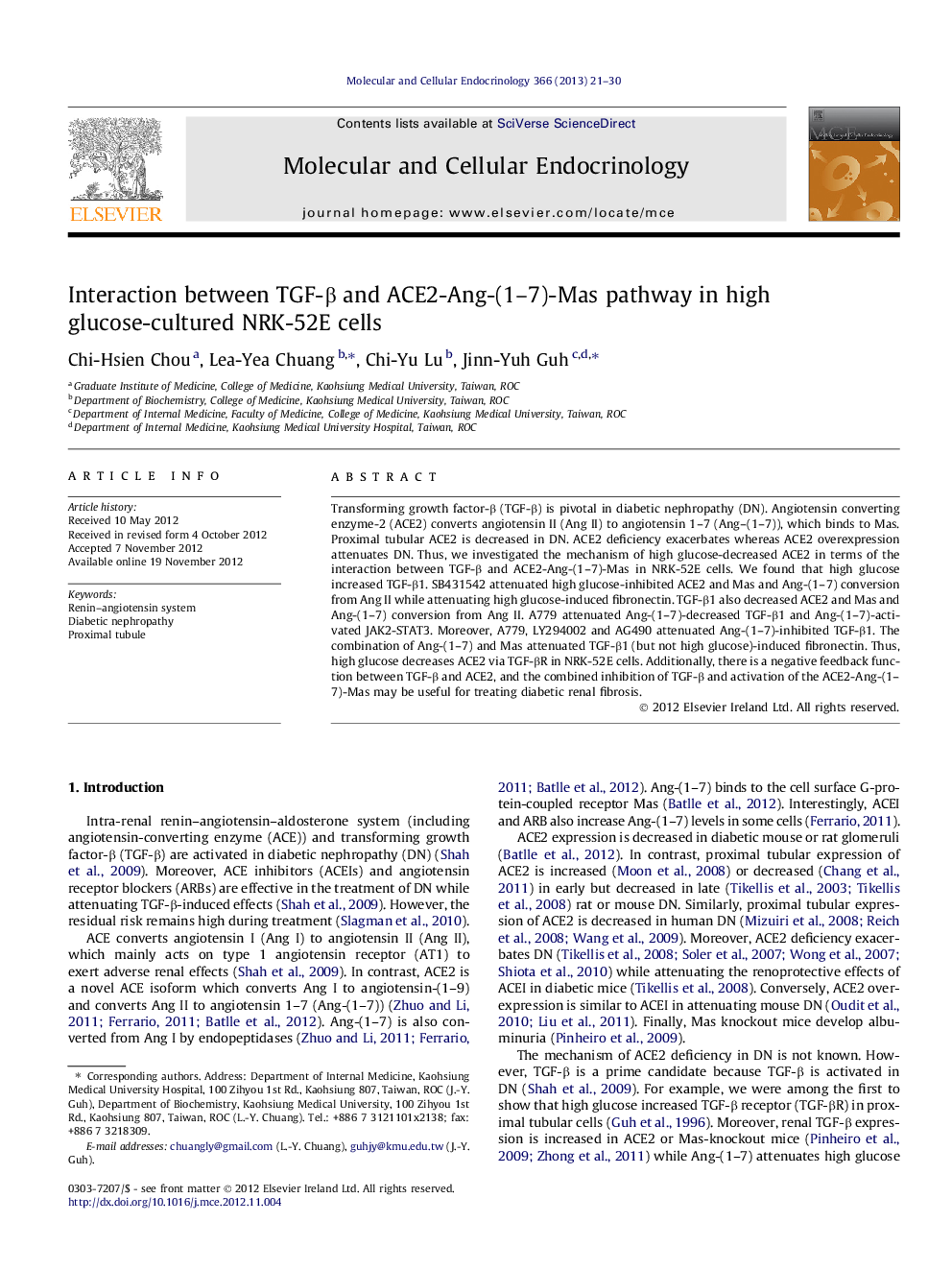| Article ID | Journal | Published Year | Pages | File Type |
|---|---|---|---|---|
| 2196238 | Molecular and Cellular Endocrinology | 2013 | 10 Pages |
Transforming growth factor-β (TGF-β) is pivotal in diabetic nephropathy (DN). Angiotensin converting enzyme-2 (ACE2) converts angiotensin II (Ang II) to angiotensin 1–7 (Ang–(1–7)), which binds to Mas. Proximal tubular ACE2 is decreased in DN. ACE2 deficiency exacerbates whereas ACE2 overexpression attenuates DN. Thus, we investigated the mechanism of high glucose-decreased ACE2 in terms of the interaction between TGF-β and ACE2-Ang-(1–7)-Mas in NRK-52E cells. We found that high glucose increased TGF-β1. SB431542 attenuated high glucose-inhibited ACE2 and Mas and Ang-(1–7) conversion from Ang II while attenuating high glucose-induced fibronectin. TGF-β1 also decreased ACE2 and Mas and Ang-(1–7) conversion from Ang II. A779 attenuated Ang-(1–7)-decreased TGF-β1 and Ang-(1–7)-activated JAK2-STAT3. Moreover, A779, LY294002 and AG490 attenuated Ang-(1–7)-inhibited TGF-β1. The combination of Ang-(1–7) and Mas attenuated TGF-β1 (but not high glucose)-induced fibronectin. Thus, high glucose decreases ACE2 via TGF-βR in NRK-52E cells. Additionally, there is a negative feedback function between TGF-β and ACE2, and the combined inhibition of TGF-β and activation of the ACE2-Ang-(1–7)-Mas may be useful for treating diabetic renal fibrosis.
► High glucose decreases ACE2 via TGF-βR in NRK-52E cells. ► There is a negative feedback function between TGF-β and the ACE2-Ang-(1–7)-Mas pathway. ► Ang-(1–7) decreases TGF-β1 via Mas-JAK2-STAT3. ► Ang-(1–7) in combination with Mas attenuates TGF-β1 (but not high glucose)-induced fibronectin expression.
